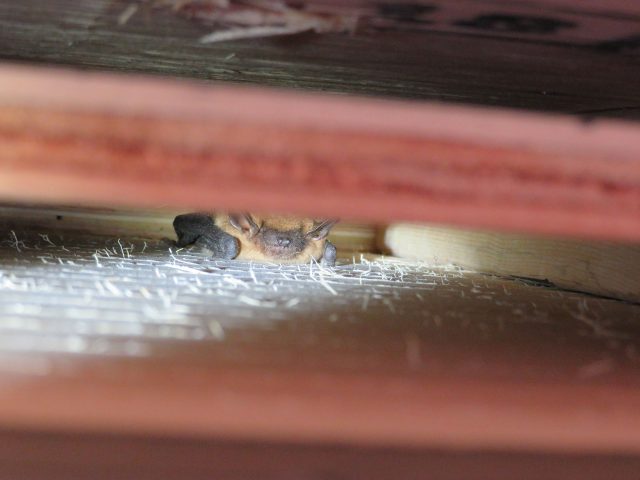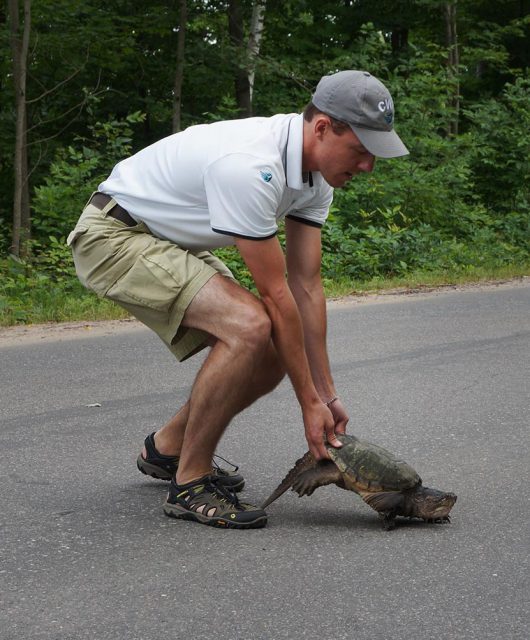Good News for the Little Brown Bat
White-nose Syndrome (WNS) first appeared in North America in 2006. This fungus was accidentally brought to North America by people who were exploring caves in Europe and now that it’s here in Canada, bats transmit it to each other as they huddle up at their hibernation sites. A powdery substance covered affected bats’ ears, muzzles and wings and wreaked havoc on bats.
These small mammals lost much of their fat reserves which they needed to survive the winter, and it made them act out of sorts – waking up frequently during hibernation, flying outside during the day in winter and choosing to hibernate at the entrance of caves instead of deep within. All this commotion led affected bats to use up more energy than their bodies could handle, use up crucial fat reserves and lead to dehydration or starvation (there aren’t any insects to eat in mid-winter!).
However, WNS does not negatively affect all bat species here in Canada. Indeed, the Big Brown Bat and Small-footed Bat have both been known to contract the fungus but have not been impacted as severely as the Little Brown Bat, Northern Long-eared Bat and Tri-colored Bat. Nonetheless, WNS has killed over 10 million bats across North America.
Light at the End of the Tunnel?

Encouraging research is beginning to trickle in that suggest some bats are beginning to fight WNS all on their own. A 2020 study from the University of Michigan found something exciting in northern Michigan populations of the Little Brown Bat. Researchers collected tissue samples from Little Brown Bats that had died due to WNS and others that survived WNS. When they took a look at the genes of these bats, they found that there were some differences in genes related to how the bats breakdown fats, how they use echolocation and how they woke from hibernation. This may indicate that these bats are beginning to evolve to store more fat and sleep more deeply – making them less devastated by the disease itself. They also discovered that bats that made it through WNS may have had scars on their wings due to the fungus but their bodies are healing the wounds themselves.
In January 2021, the journal of Molecular Ecology published a study that confirms that the genes in Little Brown Bats that survive WNS are indeed changing and making it possible to survive the disease. Researchers studied 132 Little Brown Bats in the New York and New Jersey region and found that while their immune-related genes don’t appear to be changing dramatically, it is the genes related to hibernation and metabolism that are doing the shifting.
This research is certainly promising for the Little Brown Bat, but it’s a little too early to celebrate. “We still don’t know why some individuals of susceptible bat species survive multiple years of exposure to the WNS pathogen, or why some bat species tolerate or resist the disease better than others,” says bat researcher Karen Vanderwolf, who frequently partners with the Canadian Wildlife Federation.





2 comments
Thanks for the update on the Little Brown Bats. That’s all good news. Glad that I could be part of this by adopting my little brown bat, named Baxter. He sits in my shelf with my other adopted animals, grey wolf, brown owl, snow owl and my beluga whale.
Thank you for all you do to conserve our wildlife!
Such encouraging news about the Little Brown Bats fighting WND. It’s good to read something positive.